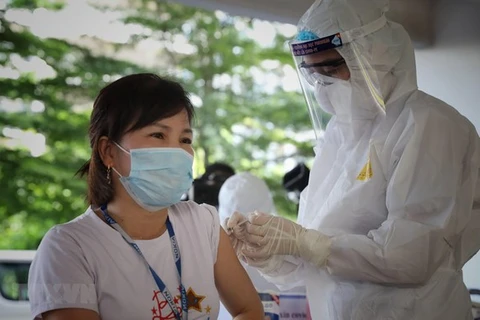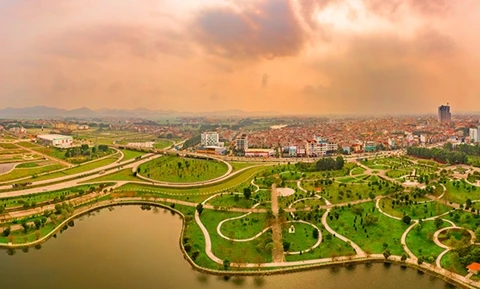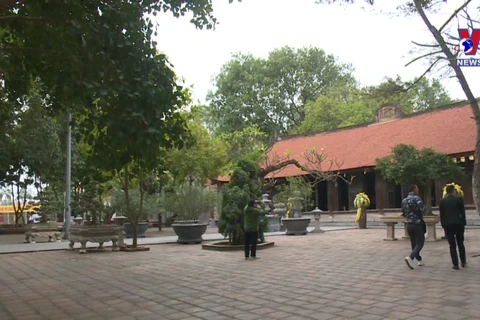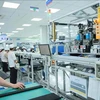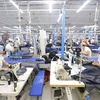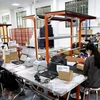 The northern province of Bac Giang will restructure its animal husbandry to raise values of local products. (Illustrative photo: baobacgiang.com.vn)
The northern province of Bac Giang will restructure its animal husbandry to raise values of local products. (Illustrative photo: baobacgiang.com.vn) Bac Giang (VNA) – The northern province of Bac Giang will restructure its animal husbandry to raise values of local products, Deputy Director of the provincial Department of Agriculture and Rural Development Le Ba Thanh has said.
In the remaining months of 2021 and the next year, local authorities will instruct districts and Bac Giang city to continue reducing small scale and dispersed farming, and at the same time bolstering biosafety models and high technology application.
Farmers are also urged to increase production in line with VietGAP standards, ensure safety and linkage of material supply, among others.
The province will work to update information on a database in tandem with the Law on Animal Husbandry for the development of the sector, together with disease prevention and consumption.
Bac Giang has suggested the Ministry of Agriculture and Rural Development reduce the import of pork and poultry because of sufficiency in domestic supplies and declining pork prices.
The State Bank of Vietnam asked commercial banks to devise policies on loan extensions for animal husbandry facilities while relevant agencies were urged to support sales of products on e-commerce platforms.
Next year, the province aims to maintain the number of pigs at 1.1 million and fowls at 20 million, producing more than 230,400 tonnes of meat.
As of September 15, it had about 19.22 million cattle and poultry. Poultry farming are mostly in the districts of Yen The, Tan Yen, Hiep Hoa and Luc Nam. The province produced some 47,300 tonnes of poultry in the first nine months, equivalent to 110.4 percent compared to the same period last year.
Bac Giang is home to 71 cooperatives and over 600 farms operating in the animal husbandry.
Production value of the province’s agro-forestry-fishery sector surpassed 31.5 trillion VND in 2020. In recent years, Bac Giang farmers earn over 10 trillion VND in total annually from animal husbandry.
Under its agricultural production development strategy to 2030 and on the basis of restructuring agricultural production towards improving the quality and value of products, including Yen The hill chickens, Yen The district has made efforts to promote production links and renovate breeding methods.
It also adopted mechanisms to encourage the development of enterprises, cooperatives, and cooperative groups in husbandry, thus building agricultural production value chains.
To boost consumption, Bac Giang targets both domestic and export markets but top priority is given to domestic markets, especially in Hanoi and major cities. It is also looking to export Yen The hill chickens to ASEAN and China in the near future.
The district will also continue restructuring chicken varieties in farming to improve quality, towards making inroads into more difficult markets such as Japan and Europe.
Bac Giang is to raise the contribution made by hi-tech agriculture in agricultural production value by 30 percent by 2030, according to the provincial Department of Agriculture and Rural Development.
The province is planning to develop agriculture towards improving its efficiency and sustainability and ensuring national food security.
The sector’s annual growth is expected to average 1.5-1.6 percent in the 2021-2030 period. Horticultural products meeting safety standards are to account for 70 percent of total output, while those in husbandry and fisheries are to reach 80 percent and 70 percent, respectively.
The province also aims to reduce its total farming land from 286,660 ha in 2025 to 271,690 ha in 2030, with agricultural production areas to come down from 124,450 ha in 2025 to 121,870 ha in 2030. Rice farming areas will also decline from 61,190 ha in 2025 to 51,207 ha in 2030.
Meanwhile, it will raise its livestock and poultry population from 26.46 million heads in 2025 to 35.64 million in 2030. The output of meat will then increase from nearly 260,000 tonnes in 2025 to 302,000 tonnes in 2030, while the number of eggs will grow from 250 million in 2025 to 300 million in 2030./.
